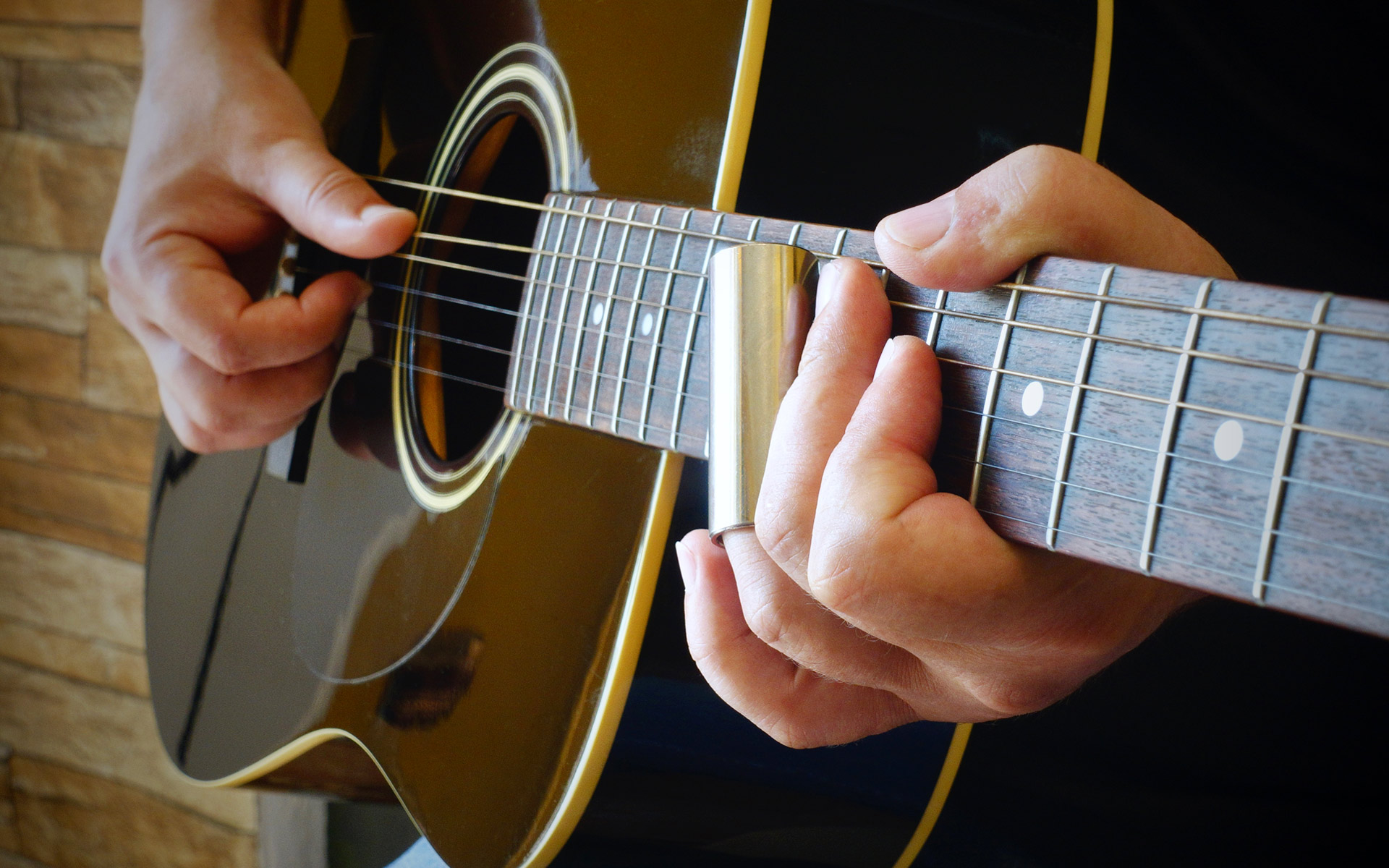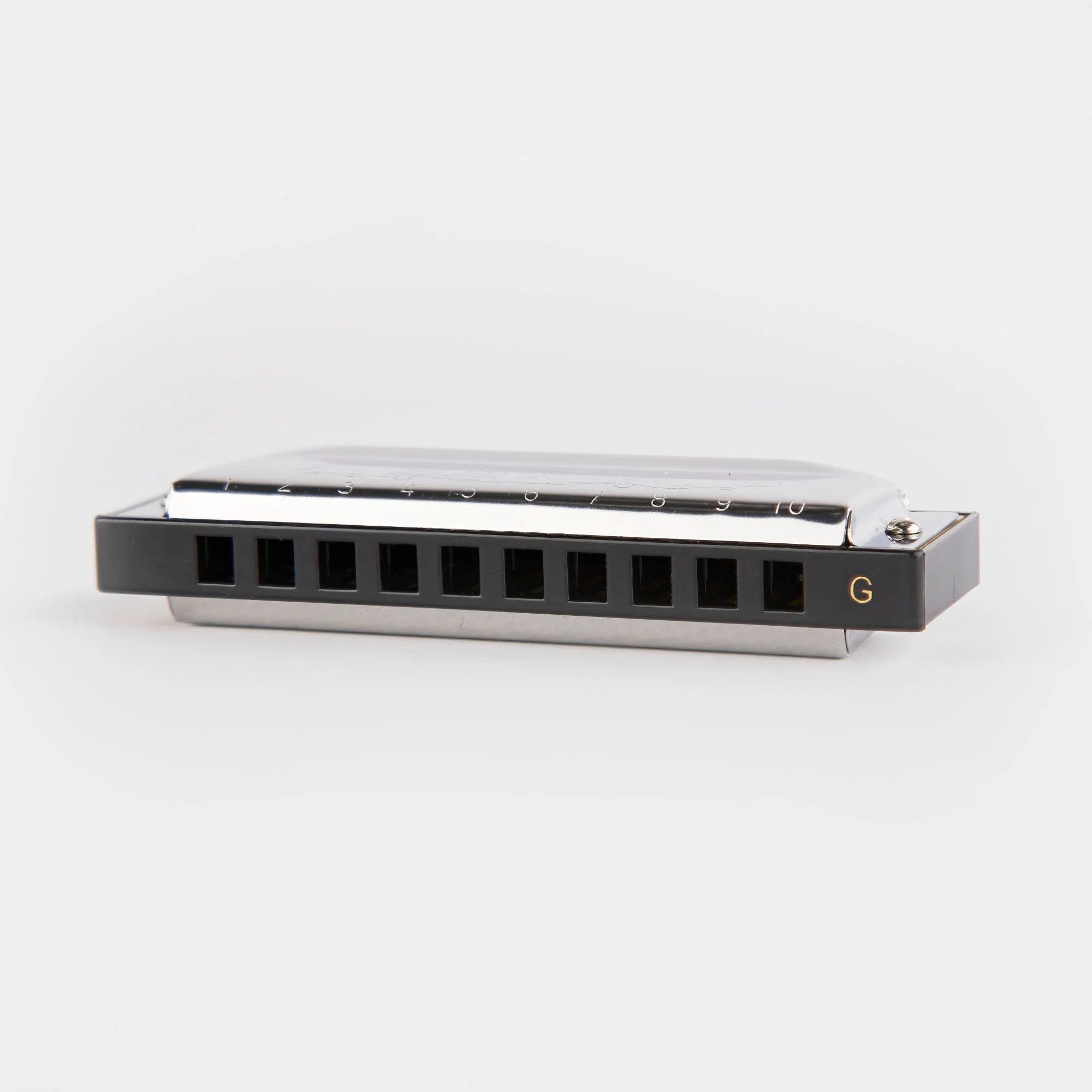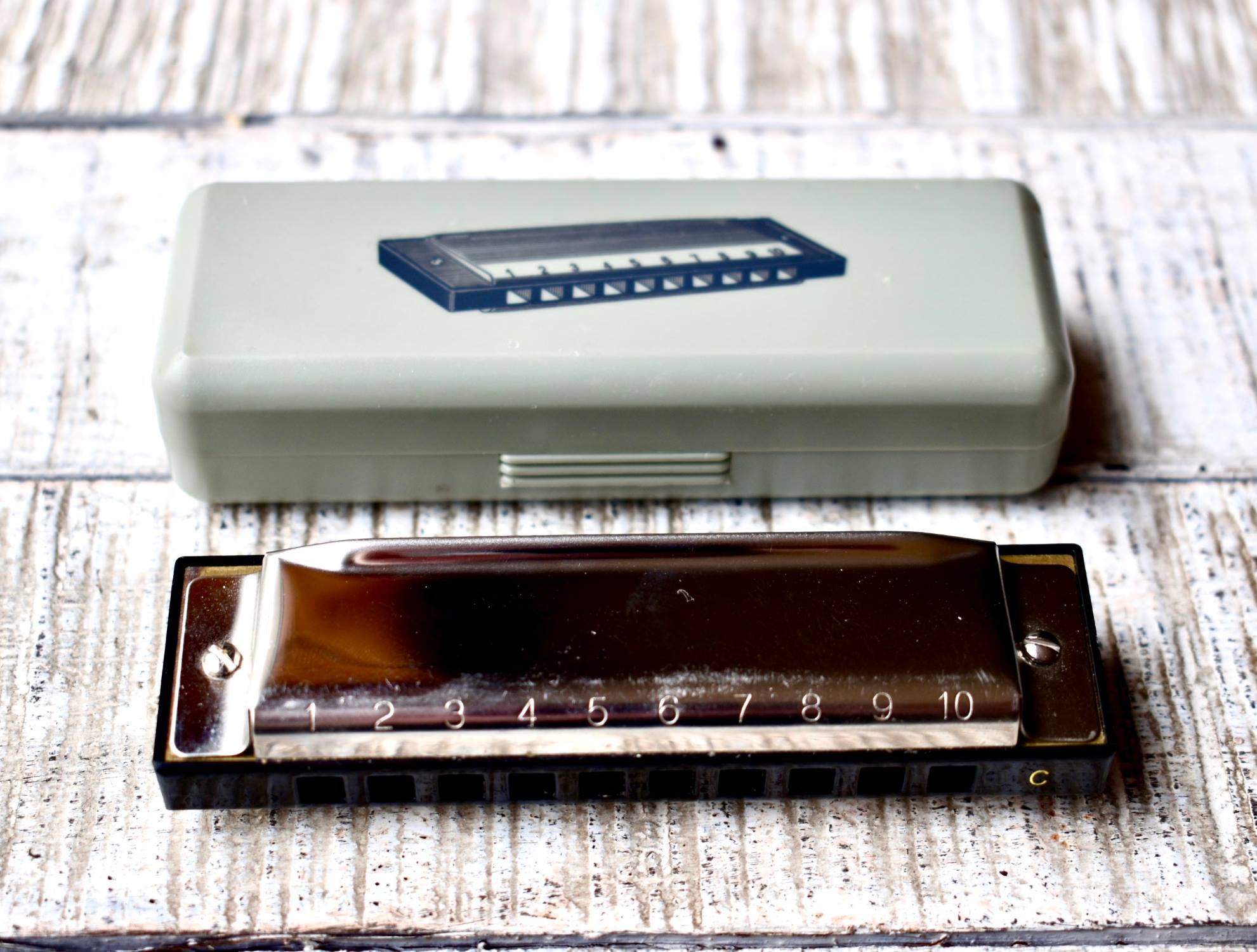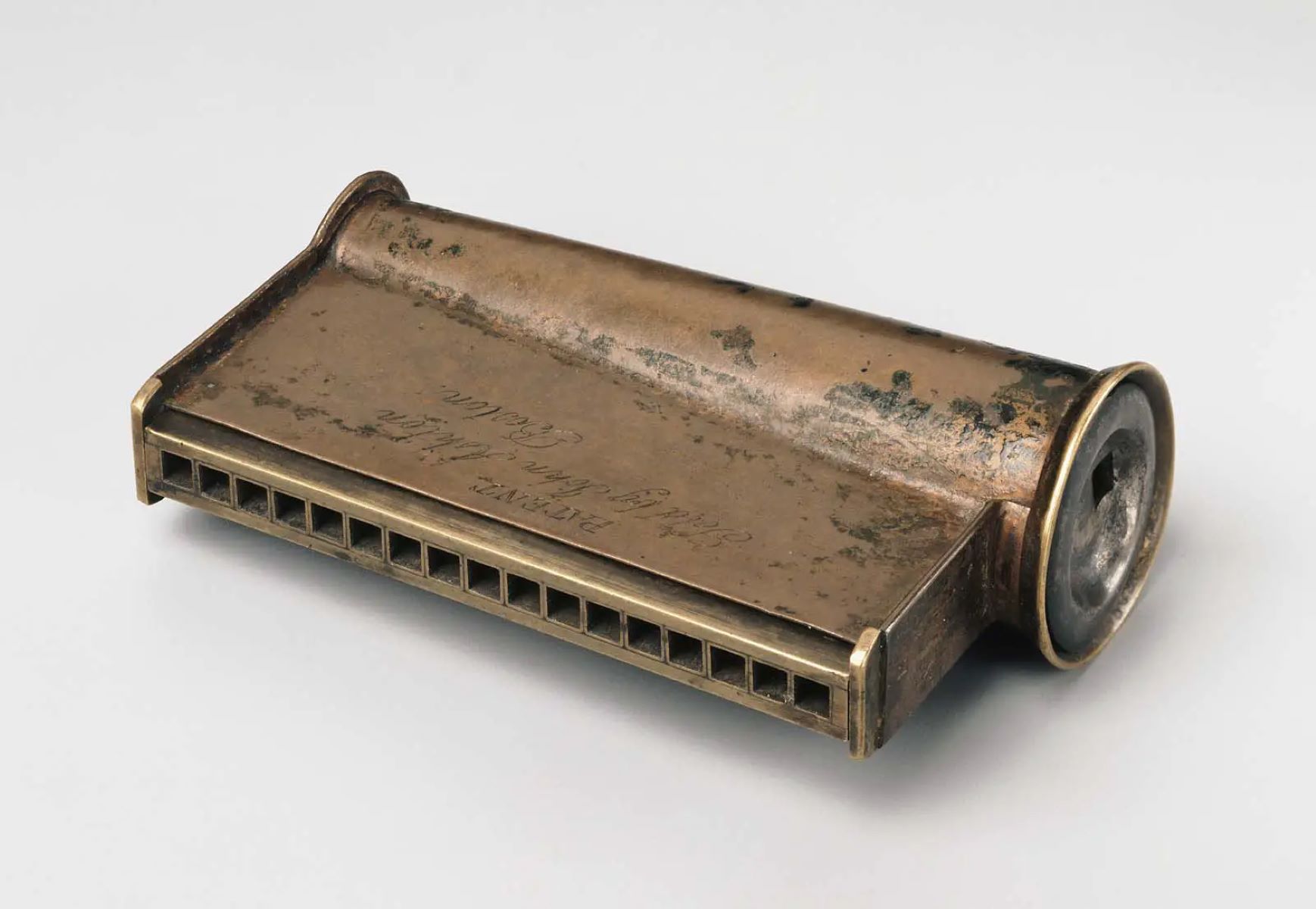Home>Instruments>Harmonica>How To Play The Blues On Harmonica


Harmonica
How To Play The Blues On Harmonica
Modified: February 3, 2024
Learn how to play the blues on harmonica with our comprehensive guide. Master techniques, scales, and riffs to become a skilled harmonica player.
(Many of the links in this article redirect to a specific reviewed product. Your purchase of these products through affiliate links helps to generate commission for AudioLover.com, at no extra cost. Learn more)
Table of Contents
Introduction
Welcome to the world of harmonica and the enchanting blues genre! The harmonica, also known as a mouth organ, is a versatile and expressive instrument that has been embraced by musicians worldwide. With its rich history and soulful sound, the harmonica has a special place in the blues tradition.
Playing the blues on harmonica is a captivating journey that allows you to express a wide range of emotions, from melancholy to joy, through music. Whether you’re a seasoned musician or a complete beginner, this article will guide you through the essential techniques and concepts to help you master the art of playing the blues on harmonica.
The blues is a genre steeped in African-American musical traditions, born out of the experiences and struggles of the Black community. It is characterized by its melancholic yet soul-stirring melodies, heartfelt lyrics, and expressive instrumentation. The harmonica, with its ability to bend notes and evoke raw emotions, is the perfect instrument to capture the essence of the blues.
But before we dive into the techniques and intricacies of playing the blues on harmonica, let’s take a moment to understand the origins and significance of this beloved and powerful musical style. By delving into the history of the blues, we can gain a deeper appreciation for the music and its cultural impact.
So grab your harmonica, buckle up, and get ready to embark on a musical journey that will transport you to the heart and soul of the blues. Whether you’re aiming to perform on stage or simply serenade yourself in the comfort of your own home, playing the blues on harmonica is a gratifying and captivating experience that will leave you craving for more.
Understanding the Blues
The blues is a genre that not only touches the heart but also tells a story. Rooted in African musical traditions and influenced by years of struggle and hardship, the blues emerged as a powerful form of expression for African Americans. With its distinctive chord progressions, emotional lyrics, and heartfelt melodies, the blues captivates listeners and carries them through a range of emotions.
At its core, the blues is about conveying feelings of sadness, longing, and resilience. It reflects the experiences of the African American community, providing a voice to their joys and sorrows. The lyrical content often focuses on themes of love, loss, poverty, and the harsh realities of life.
From its humble beginnings in the Mississippi Delta to its evolution as a global phenomenon, the blues has left an indelible mark on the music world. It has influenced countless genres, including rock, jazz, and even hip-hop. Understanding the roots and characteristics of the blues is crucial to capturing its essence on the harmonica.
When it comes to playing the blues on harmonica, it’s important to grasp the concept of the 12-bar blues progression. This sequence of chords serves as the foundation for most blues songs. It consists of three four-bar sections, each based on the I, IV, and V chords in a given key. Mastering this progression will enable you to accompany other musicians or play solo confidently.
Another fundamental aspect of the blues is its call-and-response structure. The harmonica can effectively emulate the human voice, allowing you to replicate the back-and-forth conversation between instruments or create melodic responses to the lyrics. This call-and-response dynamic adds depth and emotion to your harmonica playing.
As you delve deeper into the blues, you’ll discover that there are different styles and variations, such as Delta blues, Chicago blues, and Texas blues, each with its own distinct characteristics and influential figures. Exploring these various styles will broaden your musical palette and enhance your ability to play the blues on harmonica authentically.
Understanding the blues is not just about memorizing scales and techniques. It’s about immersing yourself in the history, emotions, and culture that gave birth to this powerful genre. By understanding the essence of the blues, you’ll be able to infuse your harmonica playing with the passion and authenticity that define this timeless music.
Choosing the Right Harmonica
When it comes to playing the blues on harmonica, selecting the right instrument is crucial. The harmonica is available in various keys and types, each with its own unique sound and playability. Understanding the different options and choosing the right harmonica will greatly enhance your blues-playing experience.
The key of the harmonica is an important factor to consider. Blues harmonica typically comes in key variations such as C, G, A, D, and E. The key determines the root note and the overall sound of the instrument. Some keys, like C and G, are more commonly used in blues music, while others provide a different tonal palette that may suit specific song styles or personal preferences. It’s recommended to start with a key that aligns with popular blues songs and progressions.
Another consideration is the type of harmonica, which can be categorized into two main types: diatonic and chromatic harmonicas. Diatonic harmonicas are the most commonly used for playing blues. They have a specific set of notes within a particular key, restricting you from playing all the notes in the chromatic scale. This limitation, however, can be an advantage as it helps to create the distinct blues sound and encourages bending techniques that add richness to your playing. Chromatic harmonicas, on the other hand, have a button that allows you to play all the notes, giving you more versatility but with a different tonal quality.
In terms of brands, there are several reputable harmonica manufacturers that produce high-quality instruments specifically designed for blues playing. Hohner, Seydel, and Lee Oskar are among the popular choices known for their craftsmanship and durability. It’s worth trying out different brands to find the one that resonates with your playing style and preferences.
Furthermore, consider the durability and maintenance of the harmonica. Blues playing often involves techniques like bending and overblowing, which can put strain on the reeds. Look for harmonicas with sturdy construction and replaceable reeds to ensure longevity. Regular cleaning and proper storage are also essential to keep your harmonica in optimal condition and prevent deterioration.
Lastly, don’t underestimate the importance of comfort and ergonomics. Harmonicas come in various sizes, from standard to smaller models designed for ease of playing. Experimenting with different sizes will help you find the one that feels most comfortable and suits your mouth shape and playing style.
Choosing the right harmonica for blues playing is a personal decision that involves considering factors like key, type, brand, durability, and comfort. Finding the harmonica that resonates with you will make your blues experience more enjoyable and inspire you to explore the endless possibilities of this captivating instrument.
Learning the Basics
Before diving into advanced techniques and complex blues scales, it’s essential to lay a solid foundation by mastering the basics of harmonica playing. Understanding these fundamentals will not only improve your technique but also build the necessary skills to play the blues with confidence.
First and foremost, familiarize yourself with the layout of the harmonica. The harmonica consists of 10 holes, each with a different note when blown or drawn. The bottom row represents the blow notes, and the top row represents the draw notes. By blowing or drawing air through the appropriate hole, you can produce different sounds.
One of the fundamental techniques in harmonica playing is single-note playing. This technique involves isolating individual notes by controlling your breath and tongue placement. Begin by practicing on a single hole, trying to produce a clear and distinct sound. Gradually move across the harmonica, aiming for accuracy and consistency. Remember to use a gentle and steady airflow to achieve clean notes.
In addition to single-note playing, mastering the art of breath control is crucial. Understanding how to control your breath will allow you to vary the volume and dynamics of your playing. Experiment with different levels of intensity to produce softer or louder sounds, adding depth and expression to your harmonica playing.
Next, focus on developing a strong sense of rhythm and timing. Blues music heavily relies on the groove and feel, so having a solid sense of timing is vital. Practice playing along with blues tracks or metronome to hone your rhythmic skills. Experiment with different rhythms, accents, and syncopations to add flair and personality to your playing.
Another important technique to learn is tongue blocking. This technique involves blocking multiple holes with your tongue to produce chords or achieve a specific sound. Tongue blocking allows you to create powerful chords and play melody notes simultaneously, adding dimension and complexity to your harmonica playing.
Lastly, ear training is essential for any harmonica player. Train your ears to recognize different melodies, chord progressions, and riffs by listening to blues music and trying to replicate what you hear on your harmonica. This will enhance your ability to play by ear, improvise, and develop your own blues style.
Remember, learning the basics sets the foundation for your harmonica journey and paves the way for advanced techniques and skills. Dedicate time to practice consistently and be patient with yourself. With practice and perseverance, you’ll steadily improve and unlock the full potential of playing the blues on the harmonica.
Mastering Essential Techniques
Once you have a solid grasp of the basics, it’s time to dive deeper into the essential techniques that will elevate your blues harmonica playing. These techniques will enhance your ability to express yourself and capture the raw emotion that defines the blues genre.
One of the most important techniques in blues harmonica is bending. Bending allows you to lower the pitch of a note by altering the shape of your mouth and controlling the airflow. By bending notes, you can achieve those soulful and expressive sounds that are characteristic of the blues. Start by practicing bending on individual holes, gradually working your way up to bending multiple notes and incorporating them into your blues melodies and solos.
Vibrato is another key technique that adds depth and richness to your harmonica playing. Vibrato is the fluctuation of pitch and intensity in a note, giving it a vibrant and expressive quality. Experiment with different styles of vibrato, from subtle and smooth to more pronounced and rhythmic, and incorporate it into your playing to bring your blues harmonica solos to life.
The blues scale is a fundamental scale in blues music and forms the basis for many licks and melodies. Practicing the blues scale in different positions on the harmonica will not only enhance your understanding of the instrument but also allow you to improvise freely within the blues genre. Take the time to familiarize yourself with different blues scales and their patterns on the harmonica.
Learning various articulation techniques can greatly enhance your blues phrasing. Techniques such as tongue slaps, tongue stops, and tongue flutters add texture and dynamics to your playing. Experiment with these techniques to create sharp attacks, percussive sounds, and articulate bluesy phrases that will captivate your audience.
Understanding and utilizing different chord structures and chord progressions in your blues playing can take your harmonica skills to the next level. By incorporating chords into your playing, you can provide a solid foundation and add harmony to your blues solos. Study different chord shapes and progressions to expand your harmonic vocabulary and create more diverse and engaging blues compositions.
Finally, it’s essential to develop a strong sense of dynamics and expression in your playing. The blues is all about emotion, and being able to convey those emotions through your harmonica playing is crucial. Practice using dynamics such as crescendos and decrescendos, and experiment with different articulations and techniques to bring out the feelings and nuances in your blues melodies.
Mastering these essential techniques takes time and effort, but the results are well worth it. Incorporating bending, vibrato, blues scales, articulations, chords, and dynamics into your harmonica playing will open up a whole new world of musical possibilities and enable you to truly express yourself in the blues genre.
Playing Different Blues Scales
Playing blues scales on the harmonica is essential for capturing the authentic blues sound and creating melodic phrases that reflect the spirit of the genre. Blues scales provide a framework for improvisation and allow you to navigate the harmonica with ease and precision.
The most common blues scale used in blues harmonica playing is the blues pentatonic scale. It consists of five notes – the root, minor third, perfect fourth, perfect fifth, and minor seventh. This scale has a distinctive sound that is inherently bluesy and forms the foundation for countless blues melodies and solos.
When playing the blues pentatonic scale on the harmonica, it’s crucial to understand the concept of positions. Each position corresponds to a different hole on the harmonica and allows you to play the scale in different keys. The most commonly used positions for blues harmonica are the first, second, and third positions.
The first position, also known as straight harp or major key, is the position in which the harmonica is played in the same key as the song. For example, if the song is in the key of C, you would use a C harmonica and play the blues pentatonic scale in the key of C. The first position creates a bright and major-sounding blues vibe.
The second position, also known as cross harp or draw key, is the most popular position for blues playing. In this position, you play the blues pentatonic scale starting on the second hole of the harmonica, which is a draw note. For example, if you’re using a C harmonica, you would play the blues pentatonic scale in the key of G. The second position produces a deep and soulful blues sound.
The third position, also known as the minor key, is another common position used in blues harmonica. In this position, you play the blues pentatonic scale starting on the third hole of the harmonica, which is a blow note. For instance, with a C harmonica, you would play the blues pentatonic scale in the key of D. The third position creates a melancholic and minor blues atmosphere.
Once you have a solid understanding of the blues pentatonic scale and the different positions, it’s time to explore variations and extensions of the scale. The major blues scale incorporates an additional note – the major third – which adds a touch of major tonality to the blues sound. The minor blues scale, on the other hand, includes both the minor third and the major third, allowing for more expressive and bluesy melodies.
Experiment with these different blues scales and their variations on the harmonica. Explore different positions, keys, and styles to develop your own unique sound and style within the blues genre. Practice scales in different patterns, rhythms, and intervals to enhance your improvisation skills and expand your melodic vocabulary.
Playing different blues scales on the harmonica opens up a world of creative possibilities. By mastering these scales and understanding the concept of positions, you’ll be able to create soulful and captivating blues melodies that resonate with your audience.
Developing Blues Phrasing
Blues phrasing is the art of expressing emotions, telling stories, and creating musical conversations through your harmonica playing. It involves using techniques, dynamics, and pauses to shape your melodies and convey the essence of the blues. Developing strong blues phrasing will elevate your harmonica playing and captivate your listeners.
One of the key elements of blues phrasing is the concept of call-and-response. Just like in a conversation, you can use your harmonica to create a back-and-forth dialogue with other instruments or even with yourself. Start by playing a short musical phrase or lick, and then pause to leave space for a response. This creates rhythmic tension and adds an engaging element to your playing.
Variation is also vital in blues phrasing. Instead of repeating the same phrase over and over again, explore different ways to play the same idea. This can involve changing the rhythm, adding embellishments, or emphasizing different notes. Experimenting with variations will bring freshness and excitement to your harmonica playing.
Another technique to enhance blues phrasing is the use of dynamics. Incorporating variations in volume and intensity can evoke different moods and emotions. Try playing some notes softly and then gradually increase the volume to create tension, or do the opposite to create a sense of release. Dynamics help to bring your melodies to life and make them more expressive.
Bending is an essential technique that greatly contributes to blues phrasing. By bending notes, you can add authenticity, bluesy flavor, and emotion to your playing. Experiment with different bending techniques, such as half-step bends, whole-step bends, and overblows/overdraws, to achieve the desired melodic expression. Bends can be used to slide between notes, create bends and releases, or add expressive nuances to your phrases.
Pausing, or using rests, is an often overlooked but powerful tool in blues phrasing. Silence can be just as impactful as sound. By strategically inserting pauses between notes or phrases, you can create suspense and anticipation, allowing your audience to savor the musical tension before resolving it. Use pauses to punctuate your phrases and emphasize certain musical ideas.
Listening to blues recordings, both past and present, is an excellent way to develop your phrasing skills. Pay attention to how great harmonica players phrase their melodies. Observe their use of dynamics, variations, and pauses and try to incorporate similar techniques into your own playing. The more you immerse yourself in blues music, the more you’ll develop a natural feel for blues phrasing.
Ultimately, developing blues phrasing on the harmonica is a journey of self-expression and exploration. It’s about finding your voice and telling your own blues story. Practice regularly, experiment with different techniques, and let your emotions guide your playing. With time and dedication, you’ll develop a distinct phrasing style that will captivate listeners and evoke the true spirit of the blues.
Adding Bends and Vibrato
When it comes to capturing the soulful essence of the blues on harmonica, two techniques that are essential to master are bends and vibrato. Bends give you the ability to infuse your playing with expressive and emotional nuances, while vibrato adds depth and richness to your notes. Together, these techniques elevate your harmonica playing to new heights.
Bending notes on the harmonica is the ability to lower the pitch of a note by altering the shape of your mouth and controlling the airflow. This technique allows you to mimic the vocal quality and expressiveness that are characteristic of the blues. By bending notes, you can add those haunting and bluesy sounds that tug at the heartstrings.
Start by practicing half-step bends, where you lower the pitch of a note by approximately one semitone. Focus on tongue placement and mouth shape to achieve a clean and controlled bend. As you become comfortable with half-step bends, progress to whole-step bends and explore different bend combinations on different holes.
Remember, bending requires air control and finesse. Take your time to develop the muscle memory and sensitivity needed to execute consistent and accurate bends. Practicing scales, melodies, and licks with bends will help you incorporate this technique naturally into your blues playing.
Vibrato is another vital technique that adds character and warmth to your harmonica notes. Vibrato is the fluctuation of pitch and intensity in a sustained note, creating a pulsating and expressive effect. It mimics the natural vibrato of the human voice and injects your playing with emotion.
To incorporate vibrato into your playing, start by focusing on your diaphragmatic breath control. Take a sustained note and introduce small, controlled variations in pitch and intensity by manipulating the airflow and tongue position. Gradually increase the depth and speed of the vibrato to find your own unique style.
Experiment with different types of vibrato, such as slow and wide vibrato for a mournful blues sound, or fast and narrow vibrato for a lively and energetic feel. Use vibrato selectively to add emphasis and expression to specific notes, or apply it consistently throughout a phrase for a more continuous effect.
Listening to blues harmonica masters and vocalists is an excellent way to develop your understanding and feel for bends and vibrato. Pay close attention to their use of these techniques and try to replicate their style and expression. Emulate their bending and vibrato techniques to create your own signature sound.
Adding bends and vibrato to your harmonica playing requires practice and patience. Start slowly and gradually increase your skill level over time. As with any technique, consistency is key. Dedicate regular practice sessions to honing your bending and vibrato skills, and soon you’ll be able to effortlessly infuse your playing with the nuances and passion that define the blues genre.
Creating Melodies and Riffs
Creating memorable melodies and catchy riffs is one of the joys of playing the harmonica in the blues genre. Whether you’re performing a blues classic or improvising, developing a strong melodic sense and crafting impactful riffs will enhance your harmonica playing and captivate your listeners.
When it comes to creating melodies on the harmonica, it’s important to understand the underlying chord progressions of the song. By understanding the chords being played, you can identify the strong notes of each chord and incorporate them into your melodies. Experiment with different note choices and rhythmic patterns to create phrases that complement the chord progression and convey the desired emotional impact.
An effective way to create melodies is by using the blues scale as a starting point. The blues scale provides a familiar and bluesy sound that fits well within the context of the genre. Explore different positions on the harmonica and experiment with bending, vibrato, and articulation techniques to add depth and expression to your melodies.
Riffs, on the other hand, are short musical phrases or patterns that are repeated throughout a song or solo. Riffs are often catchy and serve as hooks that grab the listener’s attention. Creating engaging riffs on the harmonica involves combining melodic motifs, rhythmic patterns, and the use of techniques like bending and tongue blocking.
When crafting riffs, pay attention to the rhythmic aspect. Blues is a rhythm-driven genre, and incorporating rhythmic variations and syncopations into your riffs will make them more dynamic and interesting. Experiment with different subdivisions, accents, and syncopated rhythms to bring your riffs to life.
Listening to blues recordings and studying the harmonica playing of blues greats can provide inspiration and ideas for creating melodies and riffs. Pay close attention to the melodic choices, phrasing, and the memorable motifs employed by these musicians. Study their techniques and incorporate them into your own playing, while also developing your unique style and musical voice.
Improvisation is also a powerful tool for crafting melodies and riffs on the harmonica. Through practice and exploration, you can develop the ability to improvise on the spot, creating melodies and riffs that reflect your musical instincts and capture the spirit of the moment. Improvisation allows you to express yourself freely and create unique and spontaneous musical moments.
Remember, the process of creating melodies and riffs is a combination of technical skills, ear training, and creative expression. Dedicate time to practice scales, study blues recordings, and jam along to backing tracks. Embrace experimentation and trust your musical intuition. By honing these skills, you’ll develop a repertoire of captivating melodies and riffs that will impress and inspire audiences.
Improvising in the Blues Style
Improvisation lies at the heart of the blues genre, allowing musicians to express their emotions and create unique musical moments. Improvising on the harmonica in the blues style brings a sense of spontaneity and personal touch to your playing, allowing you to tell your own musical story.
When it comes to improvising in the blues style, a solid understanding of the blues scale and its variations is essential. The blues scale provides a foundation for your improvisation, allowing you to navigate the harmonica and create melodic phrases that reflect the distinctive blues sound. Experiment with different positions, keys, and patterns to develop a deep understanding of the blues scale on your harmonica.
Building a vocabulary of licks, riffs, and motifs is another crucial aspect of blues improvisation. Listen to blues recordings and learn the signature licks played by harmonica masters. Practice and memorize these licks, and then adapt and modify them to fit your own style. As you develop your repertoire of licks, build your own library of go-to phrases that you can draw upon during your improvisations.
Rhythmic variation is a key element of blues improvisation. Explore different subdivisions, accents, and syncopations to add rhythmic interest and groove to your playing. Experiment with different note durations, rests, and rhythmic patterns to create tension and release within your solos. Developing a strong sense of timing and rhythm will help you connect with the pulse of the blues.
Listening is a vital skill when it comes to blues improvisation. Tune your ears to the nuances and phrasing of blues recordings and pay attention to how the harmonica interacts with other instruments. Observe how the musicians take turns playing solos or responding to each other, and try to incorporate these call-and-response dynamics into your own improvisations. By actively listening, you’ll gain insight into the blues vocabulary and develop a more intuitive approach to improvisation.
Embracing the concept of space and silence is crucial for effective blues improvisation. Allow moments of rest within your solos, creating anticipation and tension before releasing a flurry of notes. Utilize pauses and rests strategically to highlight certain phrases or to invite interaction with other musicians. The use of space adds dynamics and drama to your improvisation.
Remember, improvisation is all about expressing yourself and embracing the spontaneity of the moment. Play with conviction and confidence, trusting your musical instincts while leaving room for experimentation and exploration. Let go of perfectionism and embrace the beautiful imperfections that make blues improvisation so captivating.
Ultimately, developing improvisation skills in the blues style requires practice, active listening, and a willingness to take risks. Embrace the opportunity to express your emotions, tell your musical story, and connect with others through the timeless art of blues improvisation on the harmonica.
Conclusion
Congratulations! You’ve embarked on a journey into the captivating world of playing the blues on the harmonica. By understanding the history, techniques, and nuances of the genre, you have taken the first steps to master this powerful and soulful instrument.
Throughout this article, we’ve explored the importance of understanding the blues, choosing the right harmonica, and learning the basics of harmonica playing. We’ve delved into essential techniques such as bends, vibrato, and blues phrasing, and we’ve discovered how to create melodies, riffs, and improvisations in the blues style.
Remember, playing the blues on the harmonica is not just about technical skills and musical theory. It’s about channeling emotions, telling stories, and connecting with the heart and soul of the music. Practice regularly, listen to blues recordings, and immerse yourself in the sounds and spirit of the blues to develop your own unique voice and style.
Whether you aspire to perform on stage or simply find solace in playing the blues in the comfort of your own home, the harmonica offers endless possibilities for self-expression. The more you dive into the world of the blues, the more you’ll discover the joy and satisfaction of playing the harmonica in this cherished genre.
Continue to expand your knowledge, explore different blues scales and positions, and seek inspiration from the blues masters who came before you. Embrace the rich history and tradition of the blues while allowing your individuality and creativity to shine through in your playing.
Now is the time to pick up your harmonica, let the blues flow through your soul, and embark on a musical journey that will captivate and inspire. Whether you’re jamming with friends, performing on stage, or simply playing for yourself, playing the blues on harmonica will bring you countless hours of joy and fulfillment.
So, let the harmonica be your vessel to express the joys, sorrows, and everything in between. Play with passion, authenticity, and an unwavering love for the blues. May your harmonica playing take you on a lifelong journey of music and self-discovery.











